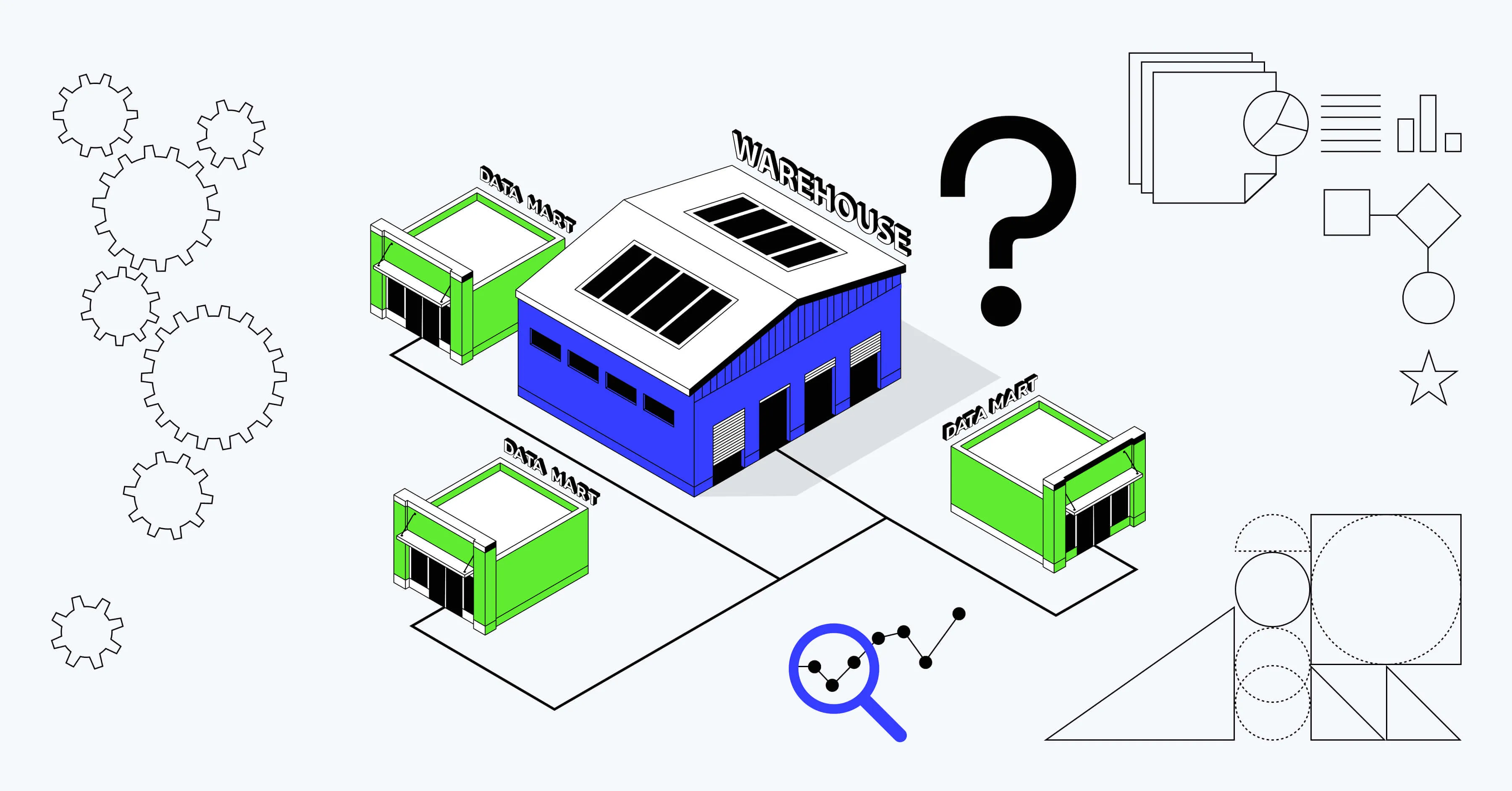Next-Generation Data Warehousing With Firebolt


Share
Cloud data warehouses can get expensive, commonly due to a lack of efficient compute options. Companies find that their existing setup cannot handle bursty workloads, so they scale out by commissioning more compute nodes. As costs rise, companies often limit analytics to stay within budget, thus undermining the main goal of making data insights more accessible.
In this context, performance and cost-effectiveness have been the main driving forces behind new data warehousing technologies. These principles are also at the core of Firebolt, one of the most recent additions to the data warehouse technology landscape.
Read on to find out what differentiates Firebolt from other data warehouse solutions, and see if it’s the right choice for you.
Data Warehouses: A Refresher
Whether you want to run an ad hoc query to check a data record, make a report, or fetch data to build a predictive machine learning model, you’ll need to refer to your enterprise’s data warehouse. A data warehouse (DW) is a central repository of information used to ensure that data is secure, correct, and easily accessible by all stakeholders. Implementing a data warehouse is a must for any company that aspires to be data-driven.
What is Firebolt?
In the short history of data warehouse solutions, we’ve seen an evolution from on-premise DWs to those residing on the cloud, and all the way to today’s serverless data warehouses. Firebolt is the newest addition to the serverless DW landscape, picking up where predecessors like BigQuery and Snowflake left off.
Firebolt is a cloud data warehouse solution built from the ground up with performance in mind. Owing to the newest innovations in efficiency maximization, Firebolt allows you to optimize the use of your resources. Firebolt implements a proprietary SQL query compiler and takes advantage of vectorized processing in the CPUs of the underlying computation nodes, among other performance-focused features, allowing it to deliver sub-second query performance cost-efficiently.
Firebolt users can focus on analytics, reporting, and decision-making without having to worry about long and expensive queries, a common concern with many cloud DW solutions.
How is Firebolt Different from Other DWs?
Now that we are aware of Firebolt’s uses and benefits, let’s take a look at what sets it apart from the rest of the pack.
1. Firebolt is highly customizable
Cloud data warehouses like Snowflake have successfully tackled the problem of scalability. Scalable pricing lets you pay only for the hardware that you use, while the vendor assigns you the appropriate hardware according to your needs. However, since most vendors focus on making management as simple as possible, few options are available for customization. Firebolt fills the unmet demand for customizable data warehousing solutions.
Built for the needs of engineers, Firebolt is serverless and fully elastic, but at the same time, it comes with many levers and knobs that you can adjust as needed. Unlike solutions that automatically handle node assignment, Firebolt offers a markedly granular control of resources. The solution lets you select an engine type optimized for your workload, choose among many different engine specifications, and scale up or down by combining the desired number of nodes—you have complete control over your resources.
2. Firebolt brings together innovations in storage and compute
Traditional DWs employ what is known as tightly coupled storage and compute, meaning they use the same node to perform both storage and compute. However, storage and compute jobs do not have the same requirements.
Firebolt separates storage from compute, allowing engineers to commission compute-optimized nodes for computate-heavy workloads such as ETL jobs, or to use nodes with less CPU but more disk space for storage. By allowing each engine to be fine-tuned as needed, Firebolt can utilize the provisioned resources much more efficiently.
Firebolt’s separation of storage and compute allows it to execute high-performance tasks much more quickly than other DW solutions, but that’s only half of the story. Firebolt likewise gains a performance boost from its native F3 file format, which takes advantage of advanced indexing techniques. Combined with its innovations in query optimization and query execution, all of the above enable Firebolt to deliver sub-second query performance.
3. Firebolt is cost-friendly
Firebolt offers a high level of cost transparency, allowing you to configure the data warehouse for optimal performance while keeping costs manageable. As this case study on Appsflyer shows, Appsflyer engineers who successfully replaced Amazon Athena with Firebolt were able to run queries significantly faster than the Athena-based solution at 20% of the cost.
As the user controls which nodes to scale and by how much, Firebolt shows the exact price breakdown in the user interface. There are no upfront fees, and you do not pay for any resources that you do not use.
Firebolt also optimizes queries for cost-efficiency. A difference between a well- and an ill-formed query can be that of minutes versus hours. Firebolt employs its own query optimizer that makes SQL queries more performant. A well-written query will run for a shorter time, and thereby drive down costs.
Should You Adopt Firebolt?
There are several considerations to bear in mind when choosing a DW solution, such as scalability, price, speed, and integration—just to name a few. Data warehouses power many important business decisions, so it’s important to carefully develop selection criteria to avoid a DW from turning into a costly bottleneck. The investments in time and money that accumulate during the DW’s lifetime are of special significance, given that DWs are some of the highest investments your company might make. Data warehouses require a lot of investment in storage and compute, yet this is not something you should skimp on given the enormous business value that DWs can bring.
It is thus a good idea to leave the door open for new technologies that solve the same old problems in new, better, and potentially less costly ways. Although building a new Firebolt-based DW comes with initial administrative and other overhead costs, your business may start seeing continuous benefits well after implementation.
If you’re looking for a self-service data warehouse that prioritizes performance and elasticity, Firebolt may be the solution for you. Firebolt’s separation of storage and compute layers makes it highly performant. This side-by-side comparison of Firebolt against other DWs shows Firebolt’s advantage when it comes to its high performance and particularly demanding use cases such as ad-hoc and user-facing analytics.
Another of Firebolt’s selling points is its highly customizable nature, but having many adjustable parts inevitably makes management more hands-on. It takes a skilled engineer to make decisions about scaling, as well as a team of technical experts to figure out the most cost-effective implementation for your use case. Otherwise, you may be better off with a more automated solution like Snowflake. What’s more, whereas Snowflake is cloud-agnostic and can be used with AWS, Google Cloud, or Azure, for the time being, Firebolt currently only supports AWS.
Need Help Implementing Firebolt?
With its support for ad-hoc analytics and queries that take less than a second to run, Firebolt truly shines for data-driven companies with demanding, high-performance analytics. However, even if you already have a data warehouse in place, you can still reap the benefits of having a complementary, high-performance data warehouse. At Mighty Digital, we are experts in such deployments.
Mighty Digital is a Firebolt certified partner, and we’re happy to talk you through any questions you may have about Firebolt or alternative data warehousing solutions.











